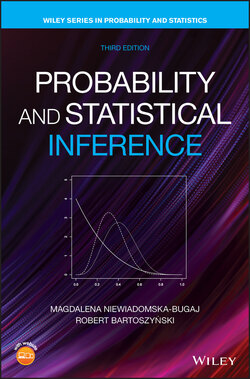Читать книгу Probability and Statistical Inference - Robert Bartoszynski - Страница 48
Example 2.1 Geometric Probability
ОглавлениеOne of the first examples of an uncountable sample space is associated with “the random choice of a point from a set.” This phrase is usually taken to mean the following: a point is selected at random from a certain set in a finite‐dimensional space (line, plane, etc.), where has finite measure (length, area, etc.), denoted generally by . The choice is such that if ( has measure , then the probability of the chosen point falling into is proportional to . Identifying with the sample space, we can then write .
To better see this, suppose that in shooting at a circular target , one is certain to score a hit, and that the point where one hits is assumed to be chosen at random in the way described above. What is the probability that the point of hit is farther from the center than half of the radius of the target?
From Figure 2.1, it is clear that the point of hit must lie somewhere in the shaded annulus . Its area is so that . Of course, the assumption under which this solution is obtained is not very realistic: typically sets closer to the center are more likely to be hit than sets of the same area located closer to the perimeter.
The concept of “random choice” from an uncountable set is sometimes ambiguous. This is illustrated by the next example.
